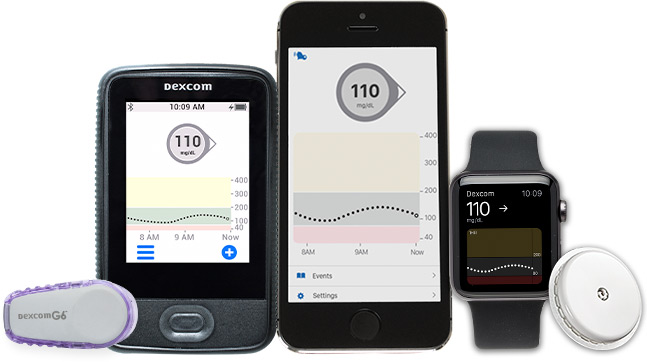Risk Factors for Diabetes – A Comprehensive Guide
This post was reviewed by our Director of Clinical Excellence and Oversight.
It’s never been more important to understand the risk factors for diabetes.
Diabetes is quickly becoming one of the most common and dangerous illnesses in the country. There are currently 30 million Americans with diabetes, and every year, that number goes up by 1.5 million. The number of people who die from diabetes is higher than deaths due to breast cancer and AIDS combined. Diabetes is also an expensive illness, costing 245 billion dollars annually. Unfortunately, many of the people who have diabetes (or prediabetes) aren’t even aware that they are sick or at great risk for developing it.

The good news is that many of the risk factors for diabetes are preventable. You can protect yourself by learning what they are and how to avoid them. As the saying goes, “an ounce of prevention is worth a pound of cure.”
Diabetes Risk Factors
Family History
If members of your family have had diabetes in the past, then there’s a higher possibility that you could develop it as well. While there’s no research that shows diabetes is an entirely genetic, studies do indicate that people with diabetic family members are up to 5.5 times more likely to develop the disease.

Age
Research shows that as we get older, our risk for developing diabetes increases. During youth, the risk is fairly minor. It’s at age 45 where most new cases of diabetes start to develop. In fact, the most common age range for getting diabetes is 45-64, with almost 900,000 new cases each year.

Ethnicity
People of different racial and ethnic backgrounds have different risks of diabetes. Some racial and ethnic groups are more at risk for diabetes than others. African Americans, for example, are 77% more likely to develop diabetes, while 11.8% of Hispanic Americans under 20 have been diagnosed with diabetes. Other ethnic groups that experience greater risk include Native Americans, Hawaiians, and other Pacific Islanders.

Menopause
The age at which menopause begins could affect the risk of developing diabetes. In general, the younger a woman is when menopause starts, the greater the risk for diabetes. In fact, recent studies showed that women who began menopause before age 40 were up to 4 times more likely to develop diabetes later in life. Women who experience menopause after age 55 tend to have the lowest risk for diabetes in the future.

Weight Gain
Weight is the most common and well-known risk factor for developing diabetes. It is also one of the most impactful. Studies show that unhealthy weight gain significantly raises the chance of developing the disease. Currently, almost 90% of people with type II diabetes are either overweight or obese. The risk factor decreases with weight loss.
Reducing the risk: Studies have shown that losing 5-7% of excessive body weight can delay the onset of diabetes by 66%.

Smoking
The impact that smoking has on the development of diabetes is simple: the more you smoke, the greater the risk of developing diabetes. Smoking has been shown to raise the likelihood of diabetes by 30-40%, regardless of what kind of cigarettes are used. Smoking also causes complications for people who already have diabetes. Smoking makes it harder to manage blood sugar and interferes with insulin effectiveness
Reducing the risk:Quitting smoking altogether is the best way to reduce risk, but any decrease in smoking can be beneficial.

Inactive Lifestyle
People who don’t do a lot of physical activity are at greater risk for diabetes. Specifically, if your activity is less than 30 minutes a day, then your risk of diabetes increases measurably. A lack of exercise has been demonstrated to change how insulin interacts with cells, which of course increases the chance of diabetes occurring. Inactivity also slows the metabolism, putting individuals at higher risk for weight gain and obesity.
Reducing the risk: Physicians recommend 30 minutes of physical activity per day to reduce the risk of developing diabetes and other health problems that stem from inactivity.

Sleep Schedule
If you’re a “night owl” and enjoy being awake during the long hours of the night, you could be at higher risk for diabetes. Recent research suggests that bedtimes have an impact on the risk to diabetes. People who stay up later are about 2.5 times more likely to develop diabetes, regardless of how many hours they sleep when they do go to bed. People with earlier bedtimes who also wake up earlier were shown to have less risk of diabetes, even if they slept the same number of hours as those who stayed up later.
Reducing the risk: Choose a regular bedtime that’s earlier, and try to make it a habit to go to sleep at that same time every night.

Medications
The use of some medications is on of the risk factors for diabetes. Specifically, statin drugs, often used to help lower cholesterol, have been linked to higher diabetes cases. Researchers have suggested that people using statins are 14% more likely to develop type 2 diabetes. The risk factor of statin use is fairly minor, but for people who are already in the high-risk category for diabetes, using them could be a cause for concern.
Reducing the risk: Talk with your doctor about the potential risk and see if there are alternatives to statin drugs that work for you.

Pregnancy
Pregnancy can also lead to a unique form of diabetes called gestational diabetes. Doctors are unclear exactly what causes it to develop, but its impact on the body is different from type 1 and type 2 diabetes. During pregnancy, the placenta produces enormous levels of hormones, some of which can counteract the ability of cells to use insulin. This can lead to gestational diabetes. The good news is that most cases of gestational diabetes, the body returns to normal after pregnancy. Experiencing gestational diabetes does, however, increase the risk of developing type 2 diabetes later in life.
Reducing the risk: During pregnancy, try to maintain a healthy, well-balanced diet while limiting sugar-laden foods.

Lack of Vitamin D
Recent studies are showing that a lack of Vitamin D could be a risk factor for diabetes. Vitamin D plays a role in reducing your body’s resistance to insulin. If there’s not enough Vitamin D in the body, it can impair the ability of insulin to work as well as it should. There are other areas in which Vitamin D contributes to diabetes prevention, such as glucose resistance and helping to regulate calcium in the cells (which can also impair the effect of insulin).
Reducing the risk: Make sure you are getting plenty of Vitamin D each day. Because Vitamin D is hard to intake through diet alone, you may want to consider alternatives, such as a vitamin supplement. Talk to a doctor to learn more about what your needs may be.

Prediabetes
Normal Fasting Glucose levels are <100 mg/dl. If Fasting Glucose levels are 100-125 mg/dl, the individual has what’s known as Impaired Fasting Glucose, or Pre-Diabetes.Fasting Glucose levels above 126 mg/dl on two separate occasions are indicative of Diabetes. There are 84 million Americans with prediabetes, many of whom do not know they are ill. People with prediabetes are at extreme risk for developing type 2 diabetes.
Reducing the risk: Prediabetes is often the result of being overweight,obese, or having a poor diet. Consider losing weight and making healthier choices in the foods you eat.

Pancreatitis
Pancreatitis is a disease of the pancreas that has been linked to an increased risk factor for diabetes. Pancreatitis occurs when the pancreas becomes inflamed, usually from digestive enzymes that activate while still in the pancreas. One of the potential long-term effects secondary diabetes, which is a type of diabetes that develops because of another medical condition. The two most common causes of pancreatitis are excessive alcohol use and gallstones. There is also some evidence about the relationship between gut health and blood sugar.
Reducing the risk: Pancreatitis develops primarily from alcoholism, so refraining from alcohol or limiting it to small amounts is a good way to reduce your risk.

Geography
Where you live may have an impact on the chances of developing type 1 diabetes. Studies have shown that people living in colder climates are more likely to develop the disease, particularly those in the northern hemisphere. While there’s no known explanation for why colder areas triggers type 1 diabetes, it’s been shown that the farther you get from the equator, the more cases there are of type 1 diabetes.

Beauty Products and Plastics
Some beauty products may be contributing to increases in diabetes cases thanks to phthalates, a chemical commonly used in the production of cosmetics and plastics. A recent study showed that older adults with high counts of phthalate were more likely to have problems with their body’s ability to regulate insulin.
Reducing the risk: Thankfully, there are products available that do not contain any form of phthalates. Check the labels to find out which ones they are.

Get Insurance-Covered CGM & Diabetes Supplies
Monthly Deliveries | We Handle the Paperwork

Disclaimer:
Unless otherwise noted, the recommendations in this document were obtained from the sources indicated. Be advised that information contained herein is intended to serve as a useful reference for informational purposes only. HCD cannot be held responsible for the continued accuracy of or for any errors or omissions in the information. All trademarks and registered trademarks are the property of their respective owners.

